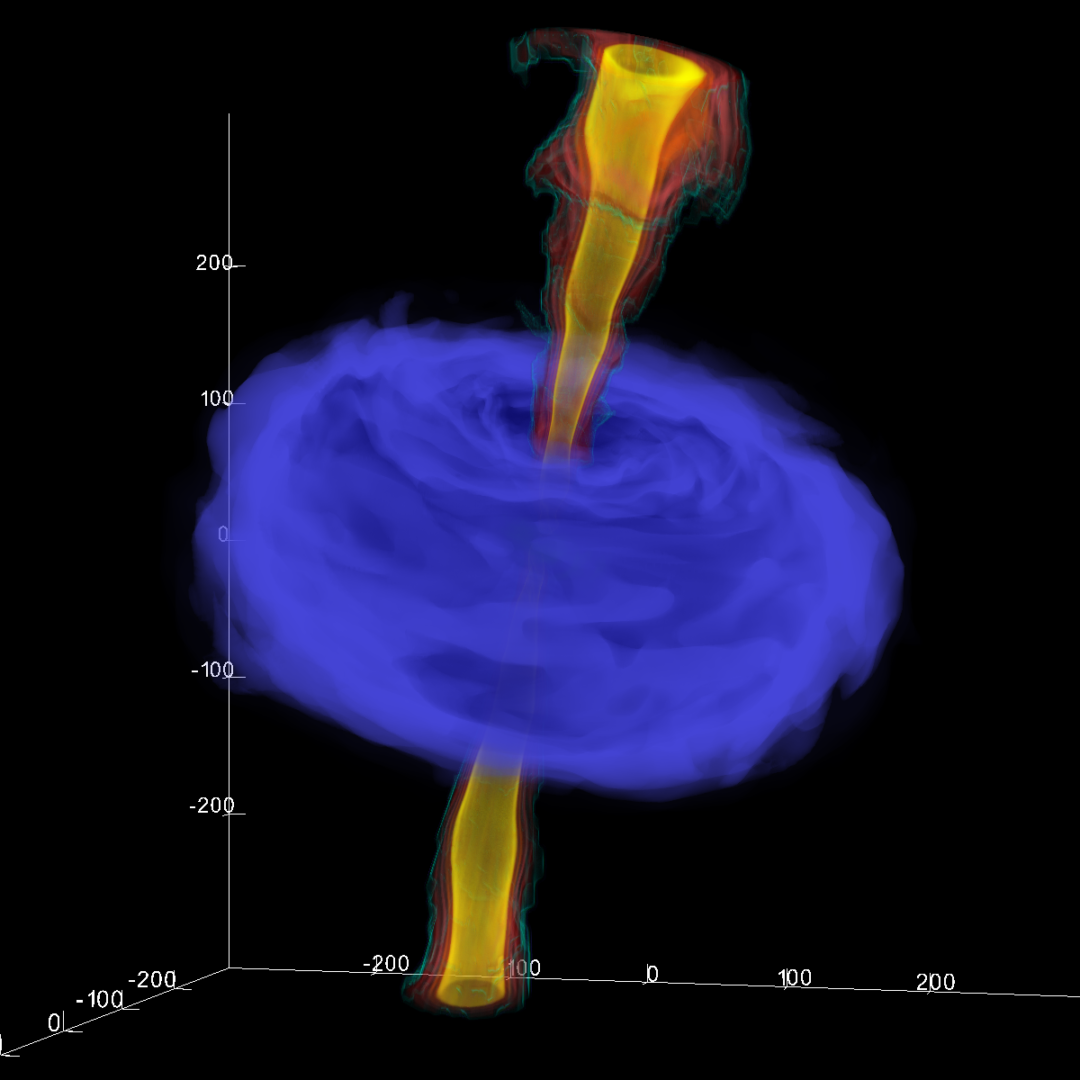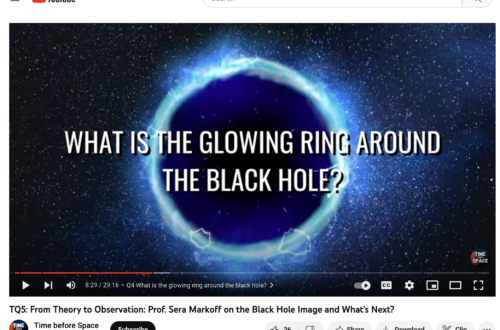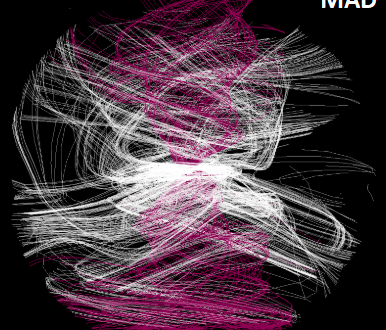In today’s post, I will talk about a subset of compact objects (neutron stars or stellar mass black holes), which run with very high spatial velocity through the interstellar medium. Those runners, in general, imprint characteristic signatures on their way: trails and bubbles.
For the case of static objects (i.e., no proper motion), which the relativistic jets (or winds) from the compact objects interact with the ambient medium, the theoretical model of the evolution has been studied well over the decades: (1) the early momentum-driven phase, where the ram pressure of the jet is significant for the dynamical evolution, (2) the energy-driven phase, where the slowed-down outflow inflates supersonically expanding lobes, (3) and the final subsonic phase, where the radio lobes are in pressure equilibrium with the environment.
However, when the objects move with very high proper velocity or they encounter the severe weather (e.g., strong wind), the evolution somewhat differs from what would be expected in the static case: the jets (or winds) are swept backward, leaving the trails behind their trajectory. The relativistic plasma, ejected from the central compact object, stream through the trails and provide energy, which is responsible for inflating cavities.

It is well reported that some neutron stars run with the speed of >100s km/s and some low-mass X-ray binaries run with the speed of >10s km/s (see above). Such high-spatial velocity is caused by the natal kick of the neutron star (or black hole) during its supernova explosion when the symmetry is broken as a possible consequence of anisotropic behavior from several factors: neutrino emission, mass ejection, or instability.

Another interesting feature that appears in these objects is the inflating bubble behind the object. It is natural that the energy required to inflate the bubble can be supplied from the relativistic plasma, but it is sometimes not clear to answer the fundamental question of how the bubble can be generated. This is not trivial since most of these objects are located very far from their birth-places, the bubble should not be the debris of the supernova explosion but some explosive shell expansion triggered during their journey. In particular, the characteristic double bubbles, which are shown in “Guitar nebula”, raised the question even more complicatedly (see the figure above). One possible idea is that the expanding bubble can be initiated when the object moves through the medium with non-uniform density.

Along with the theoretical modeling of the structures, the presence of the observed bubble is also useful to infer the physical properties of the object and its ambient medium such as jet kinetic power (or, pulsar’s spin-down loss), spatial velocity, distance, and ambient density, which are difficult to be constrained in many cases.




